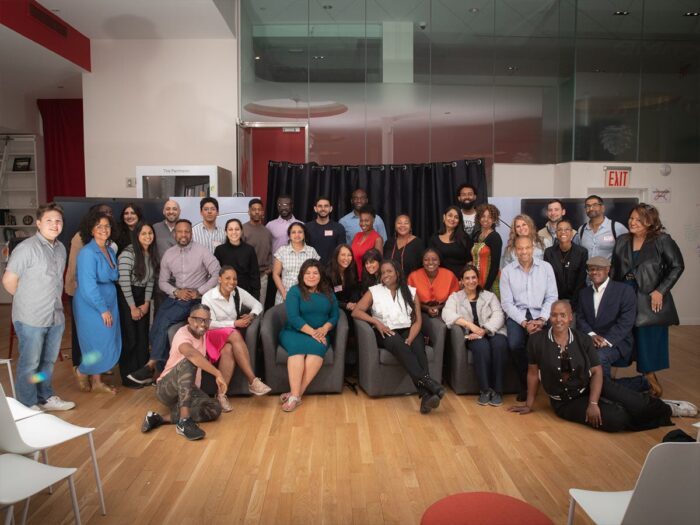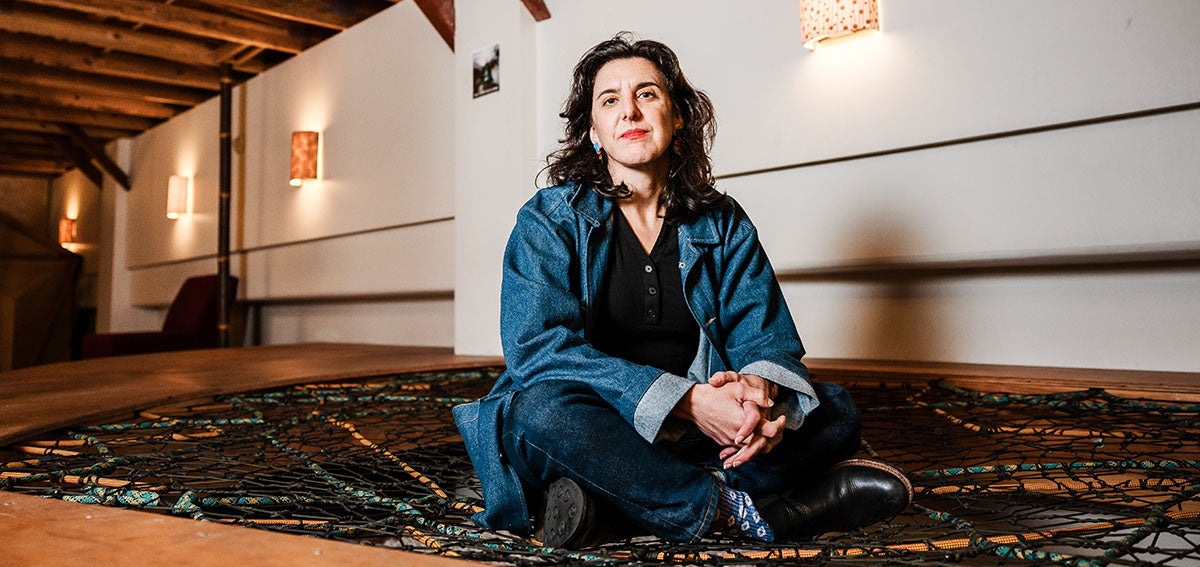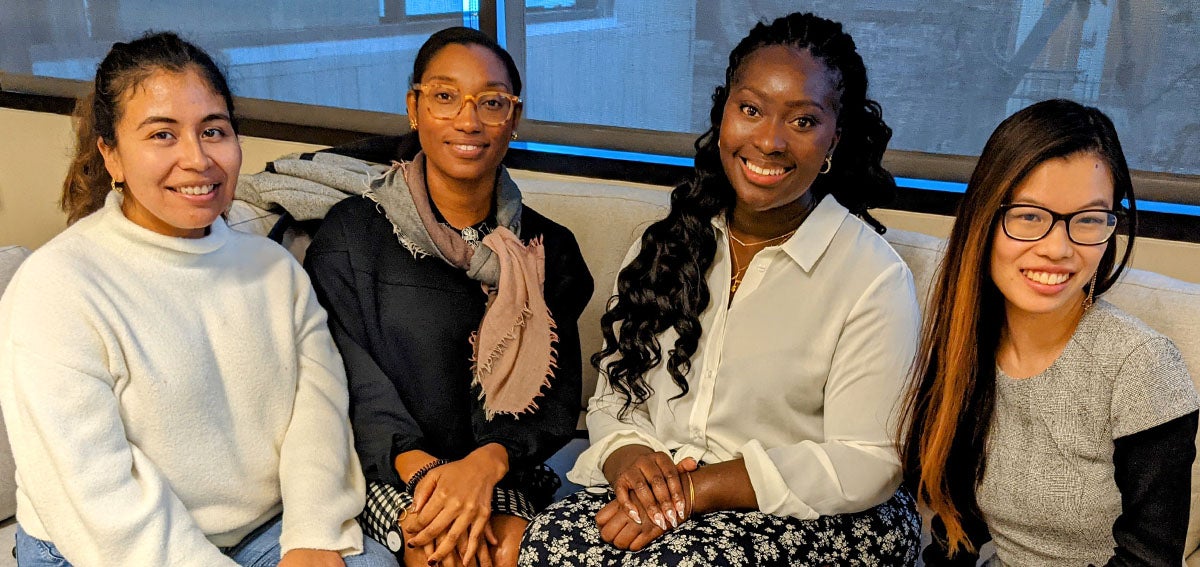|
Getting your Trinity Audio player ready…
|

In the first half of 2023, funding for Latino/x founders of companies, including health tech startups, represented less than 1.5% of all investments in the US. This underinvestment is part of a persistent pattern of investors overlooking innovative solutions emerging from communities of color. It’s a critical problem that hinders people with lived experience from developing technology solutions that can benefit millions of Medicaid enrollees and diminishes business and wealth-building opportunities for women as well as Latino/x and Black people.
Vanessa Villaverde is working to change that. She is the newest senior program investment officer on the California Health Care Foundation’s Innovation Fund team and one of the handful of Latina/x investors in the country. “There are many talented entrepreneurs of color who are developing health care solutions and want to work in the health care safety net, but they don’t have the financial resources, network, or mentorship,” Villaverde said.
In this role, Villaverde is leveraging years of experience at the US Centers for Medicare and Medicaid Services as well as deep expertise working with health care tech companies. Her goal is to help entrepreneurs develop their technologies and make the leap into the Medicaid marketplace.
I sat down with Villaverde recently to find out why she became an investor, why technology is so important to Medicaid programs and enrollees, and what can be done do to eliminate the funding challenges facing entrepreneurs of color.
Q: How did you become interested in investing in health tech and why?
A: I got my start in entrepreneurship as one of the first employees at a small company called Remedy Partners. My job was to translate between our investors and our operators. I had to communicate complex ideas to investors who didn’t work in health care. I realized that investors were willing to support an idea if they trusted the founding team, and had this “Aha!” moment that trust is the basis of economic transactions. I went into investing because I realized that trust is the gift that investors bring to founders and to companies: if I deploy capital with you, you will build a company that will have an impact. There are not enough people of color, and certainly too few Latinas, involved in the trust-building that leads to company creation today. That’s why I went into investing.

Q: Founders of color get a small fraction of the investments that flow to White founders. What explains this disparity?
A: From my perspective, it isn’t because founders of color don’t build companies that are as valuable or impactful. It isn’t because we don’t have the same amount of talent. In my opinion, there are gaps in networking relationships and opportunities for people of color that result in fewer doors opening for them. That means these founders get fewer opportunities to obtain funding. Most venture capital (VC) investors rely on referrals from people they know to make deals. They inhabit closed-door circles, and they rely heavily on their networks, making it nearly impossible for anyone outside of their spheres to get access to capital. We must find ways to overcome these barriers because there are many talented women and people of color who are developing brilliant solutions, and they need access to capital.
Q: How can we break down the barriers faced by entrepreneurs of color?
A: Investors can break out of their information silos, talk to new people, and expand the places where they source information on new companies and technologies. The majority of VC firms are demographically homogenous — mostly male and White. This homogeneity produces a group bias that leads VC investors to invest in people who look like them, leading to disparities in funding. To change that, VC firms can listen to investors from communities of color with whom they are not typically involved. They can focus on talented people with big ideas and support them with money, time, mentorship, and with their Rolodex — do people still say Rolodex? — and contacts. Because we must work together to make change and create the connections that are missing.

Q: You grew up in Texas only a nine-minute drive from the Mexican border. How did the proximity to Mexico affect your perspective on health care?
A: My family raised us in Brownsville, Texas — a place where the US and Mexican economies were permeable. You had a choice to get goods or services in this country or in Mexico. My dad was an engineer, but his employer never provided him with health insurance. To make the most of that job opportunity and take care of his family, he couldn’t complain about the fact that he wasn’t given the same health care benefits as an engineer born and educated in the US. As a result, we received health care on the Mexican side, oftentimes paying cash to keep our costs low and to avoid having to choose between buying food or buying medicine.
Once, when I was little, I contracted hepatitis from drinking contaminated water. It was the first time that I had a very costly illness, and we had to go to Mexico weekly. That meant that my dad couldn’t take our one car to work. He had to ride a bicycle for miles to get to his office so that I could ride in the car to the doctor. These kinds of vivid memories are why I stay in health care. Our system must be better. It must be affordable. People should not have to choose between providing for their families and getting care.
Q: Why is innovation so critical in health care, especially in Medicaid?
A: At one time, people thought that safety net programs like Medicaid should allow for emergency room coverage and a minimum number of primary care activities, and that magically, that would be enough. Then people started to realize that until we invested in innovation and personalized medicine across all populations regardless of income, we weren’t going to get to the outcome we wanted, which is high quality, affordable care.
We have the power and opportunity to create options in Medicaid for people who are the backbone of our country. These are populations that are working their butts off in farmworker trades and construction jobs who just want to provide for their families. We can give them choices like street medicine and services that come to their home so that they can get the care they need when they need it. For example, a company we invested in called Spect makes a specialized camera that attaches to a mobile phone, allowing community clinics and other outpatient/mobile providers to conduct virtual retinal examinations for diabetic patients. It is a tremendous privilege to bring innovation to populations that need it most.
Q: Why did you decide to join the California Health Care Foundation?
A: I want us to live in a world in which talent can flourish and people can find each other and build economies together based on the impact that they want to create. And I care deeply about creating an impact in communities with low incomes, which is why I came to the California Health Care Foundation.
Authors & Contributors


Nancy Newman
Nancy Newman is a Southern California-based photojournalist and commercial photographer with extensive experience in news and portraiture. In more than 25 years in the industry, she has often focused on subjects in the worlds of health care, education, business, philanthropy, public relations, sports, entertainment, and fashion. She enjoys applying her documentary photojournalism style of photography to help clients achieve their editorial and marketing objectives.
Newman worked for newspapers and magazines before she started her own photography business and now serves local, national, and international clients. Her photographs have been published in more than 17 countries and have garnered multiple awards.





